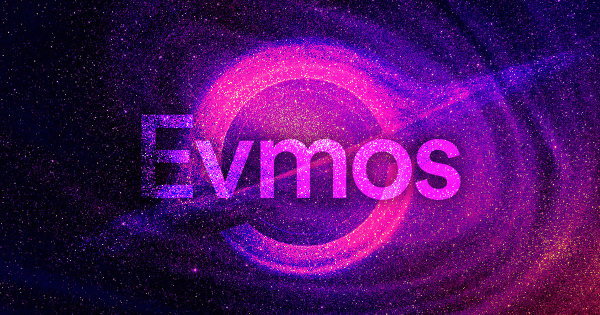This article introduces Evmos which is an Ethereum virtual machine (EVM( built with the Cosmos developer toolkit. The Cosmos advantages are discussed and explained in simple terms.
What is Evmos?
Evmos is an Ethereum-virtual machine built with Cosmos. An EVM is the environment that all Ethereum accounts and smart contracts live in[1]. EVMs are an imperative integration because Ethereum has proven itself and provides the volume and already established interest from the crypto community. Cosmos is one of the most powerful interoperability networks in all of crypto. For an in-depth article on the associated ATOM token check out this [article]. Evmos essentially brings Ethereum applications to Cosmos all while incentivizing developers to build on Cosmos.
Evmos is already proof of stake, this removes the energy concerns that are often associated with Bitcoin and Ethereum mining. Evmos allows developers to hold onto some major Ethereum benefits while utilizing the Cosmos Tendermint core. Since Evmos also carries innate Cosmos integration, the blockchain will easy connect to all other Blockchains built using Cosmos as well. This brings an ease of use for the developers which all too often have continuous headaches when it comes to blockchain development [2].

Evmos utilizes the Cosmos Inter-blockchain Communication Protocol to integrate many chains. The IBC is a hallmark feature of Cosmos which allows all Cosmos integrated blockchains to speak with eachother in a secure manner. This avoids the security of normal cross-chain bridges between chains that do not speak the same language.
Benefits of Cosmos
Any blockchain that has Cosmos integration immediately benefits from the interoperability of the protocol. As more chains come to Cosmos, the ecosystem grows, and another layer of the Cosmos web expands adding additional features. Evmos applies the lightning-fast proof-of-stake Tendermint protocol which provides a very cheap alternative to Ethereum gas fees. Tendermint is the consensus mechanism for Cosmos. Consensus helps decide if transactions are valid and safe, or invalid and malicious [3]. Tendermint also allows any programming language to be used so developers do not have to duplicate their efforts.
Ethereum has been created to accommodate the average blockchain based use case, but not specific use cases. Limiting developers is not a great way to attract them to a protocol for the long-term, developers want to be able to build without limitations. The easier it is to develop on a protocol, the more attractive it becomes to developers, and the more organic the growth of the ecosystem will become. Before Cosmos, developers building a blockchain would be required to build all three layers of the chain from the ground up. Ethereum simplified smart contract coding but did not simplify new blockchain development.
Tendermint melds the networking and consensus layers and forms them into a native engine for builders. This allows developers to focus on the third layer, the application layer exclusively. These changes save a tremendous amount of time and money. The protocol also provides instant transaction finality and can handle thousand of transactions per second [3].
The Cosmos SDK allows developers to take already figured out sections of code and combine them in different patterns tailored to a specific need. These sections are known as modules, anyone can create a Cosmos module on the open-sourced platform. The modular nature also aims to eventually be able to integrate with nearly any consensus engine in the future. Evmos has some serious possibilities considering integration with Cosmos. Please remember that none of this is financial advice. Stay tuned for our review on the Evmos token, a deep dive into the token economics and ecosystem.
[1] https://ethereum.org/en/developers/docs/evm/
[2] https://docs.evmos.org/about/intro/overview.html
[3] https://v1.cosmos.network/intro
















